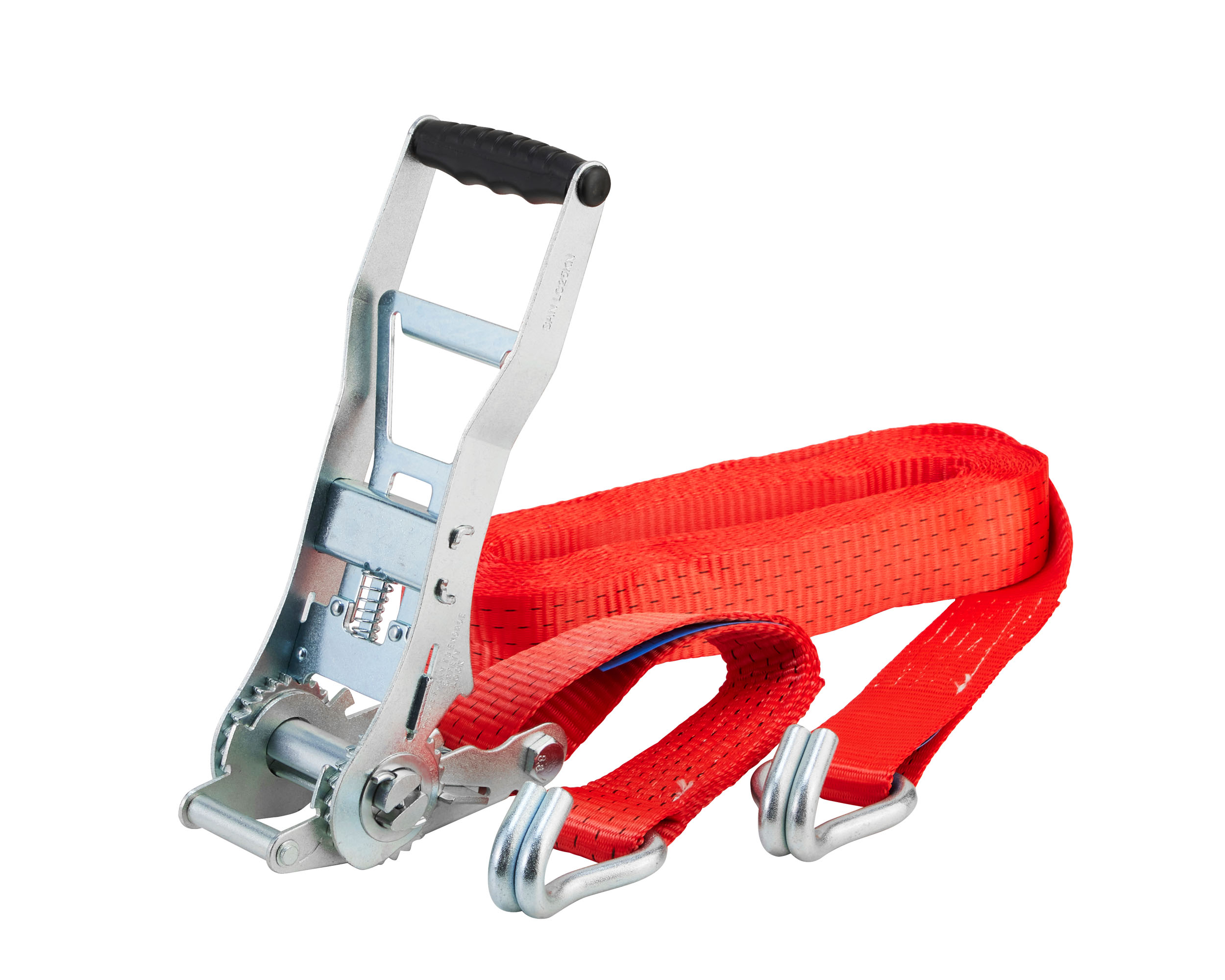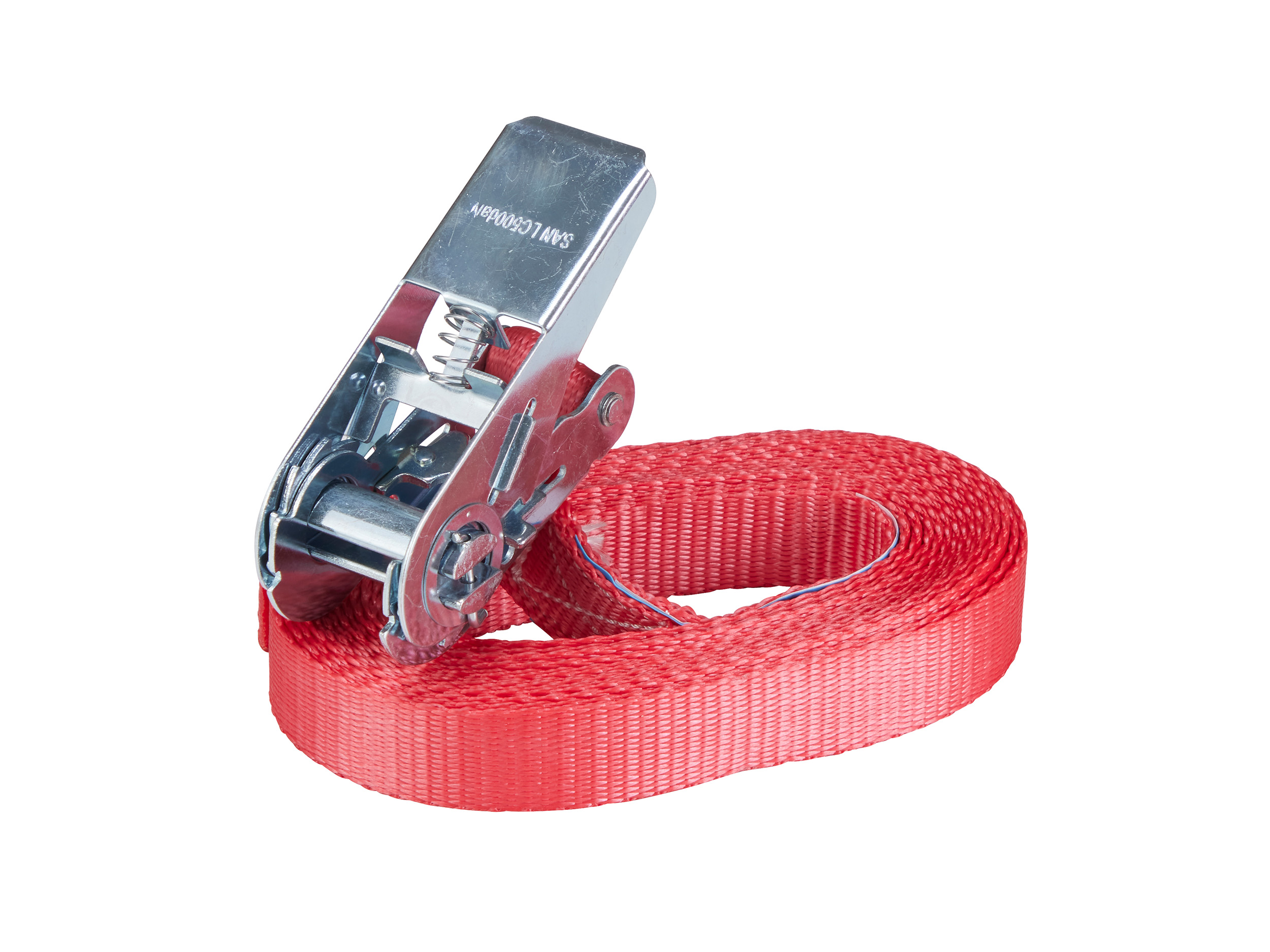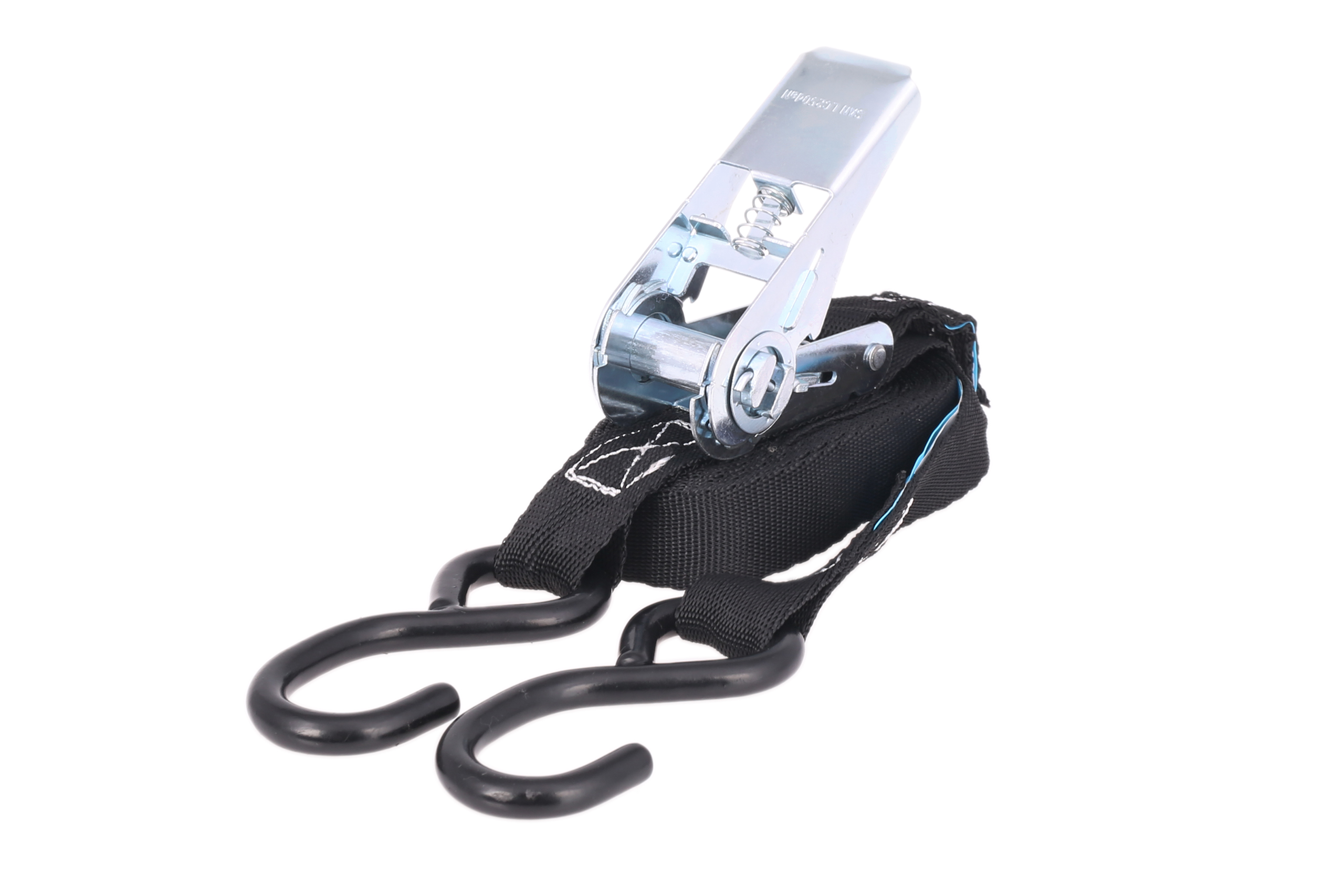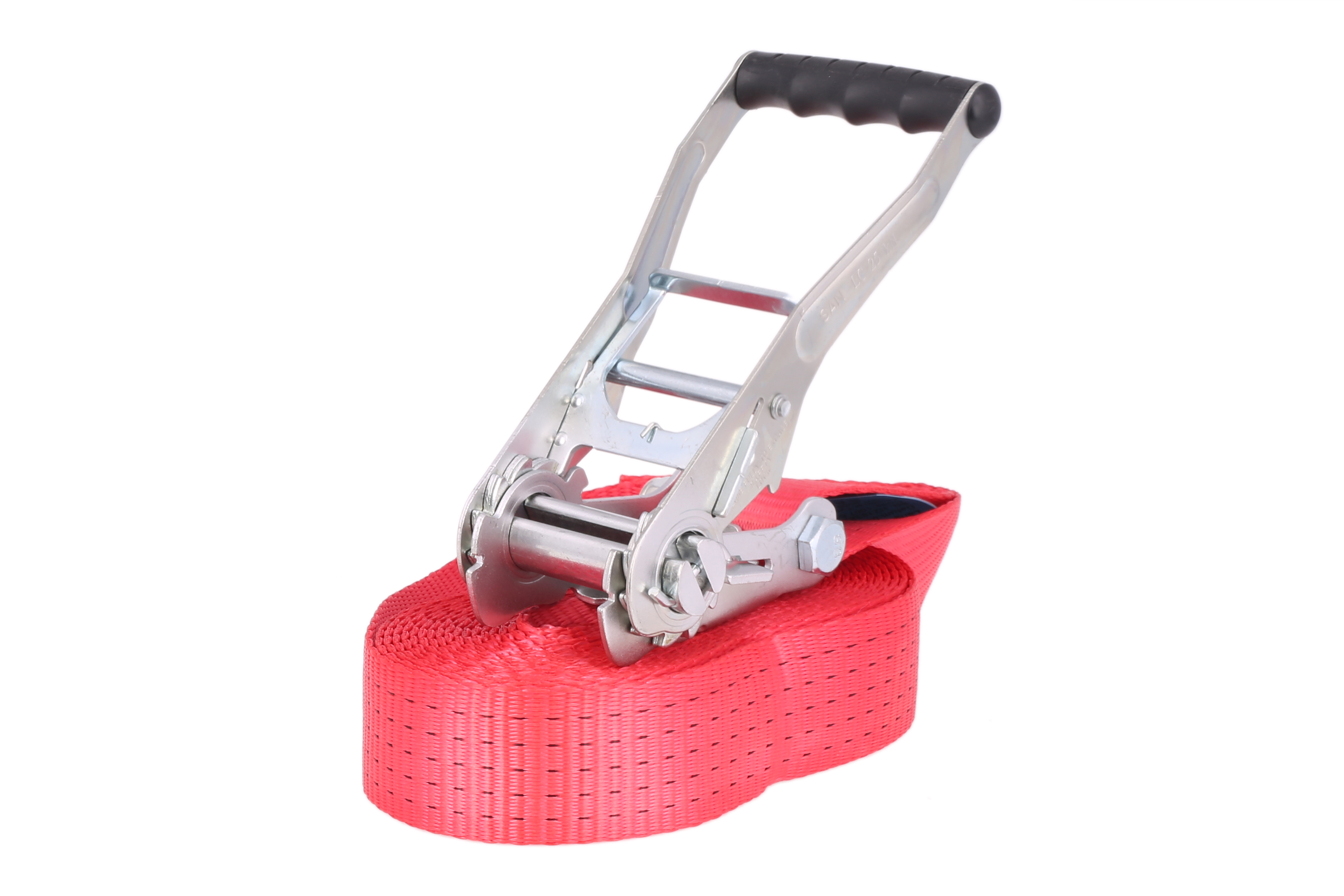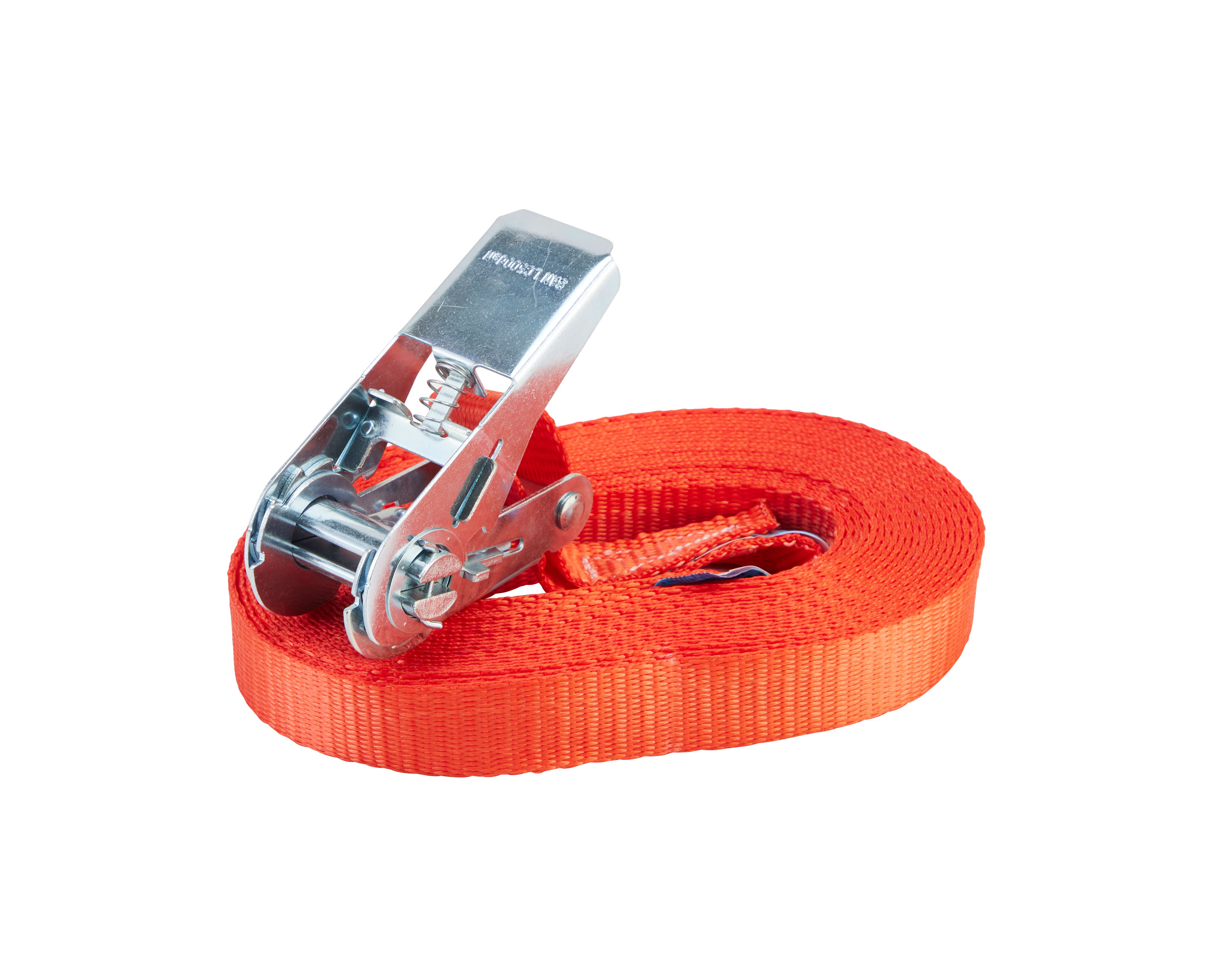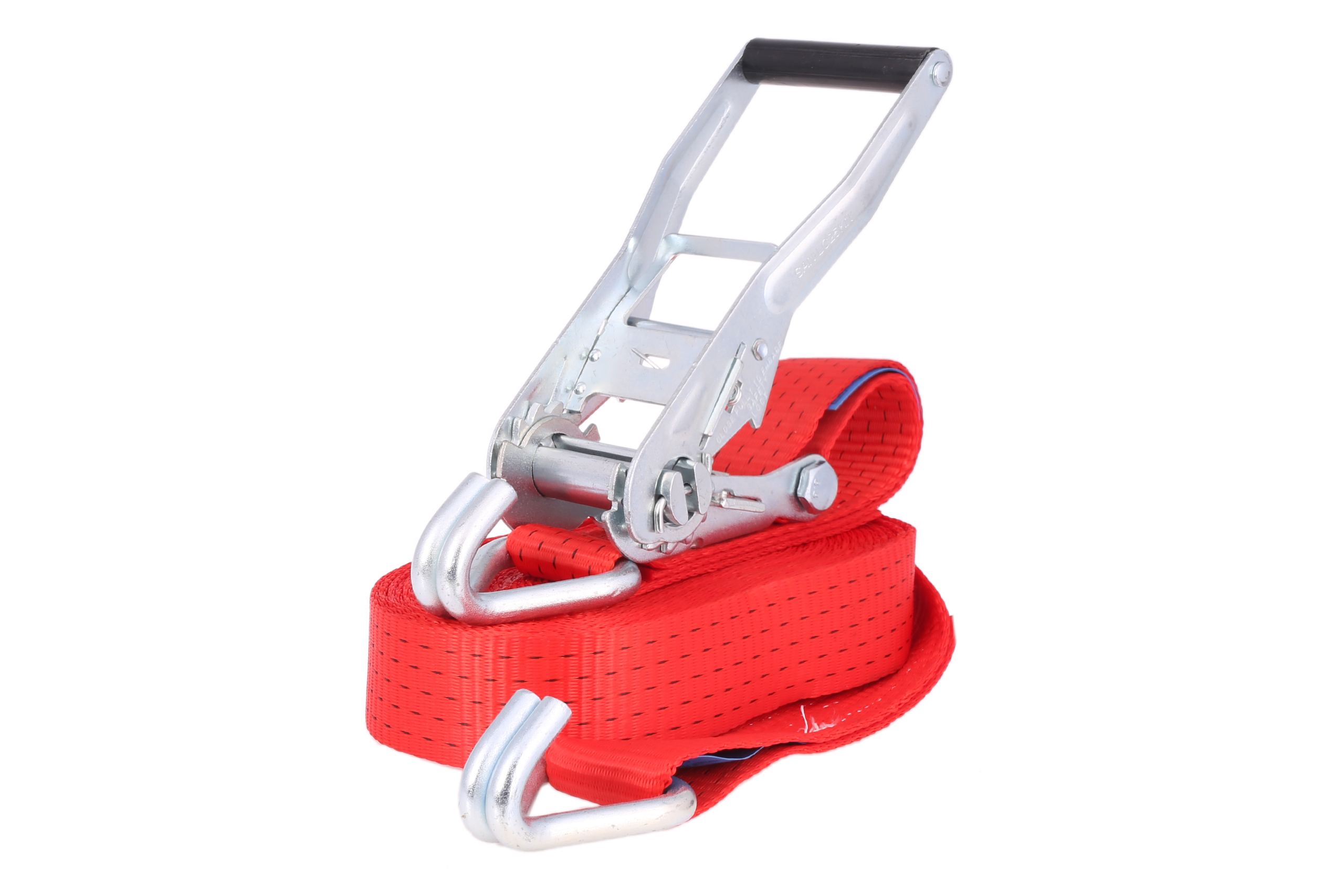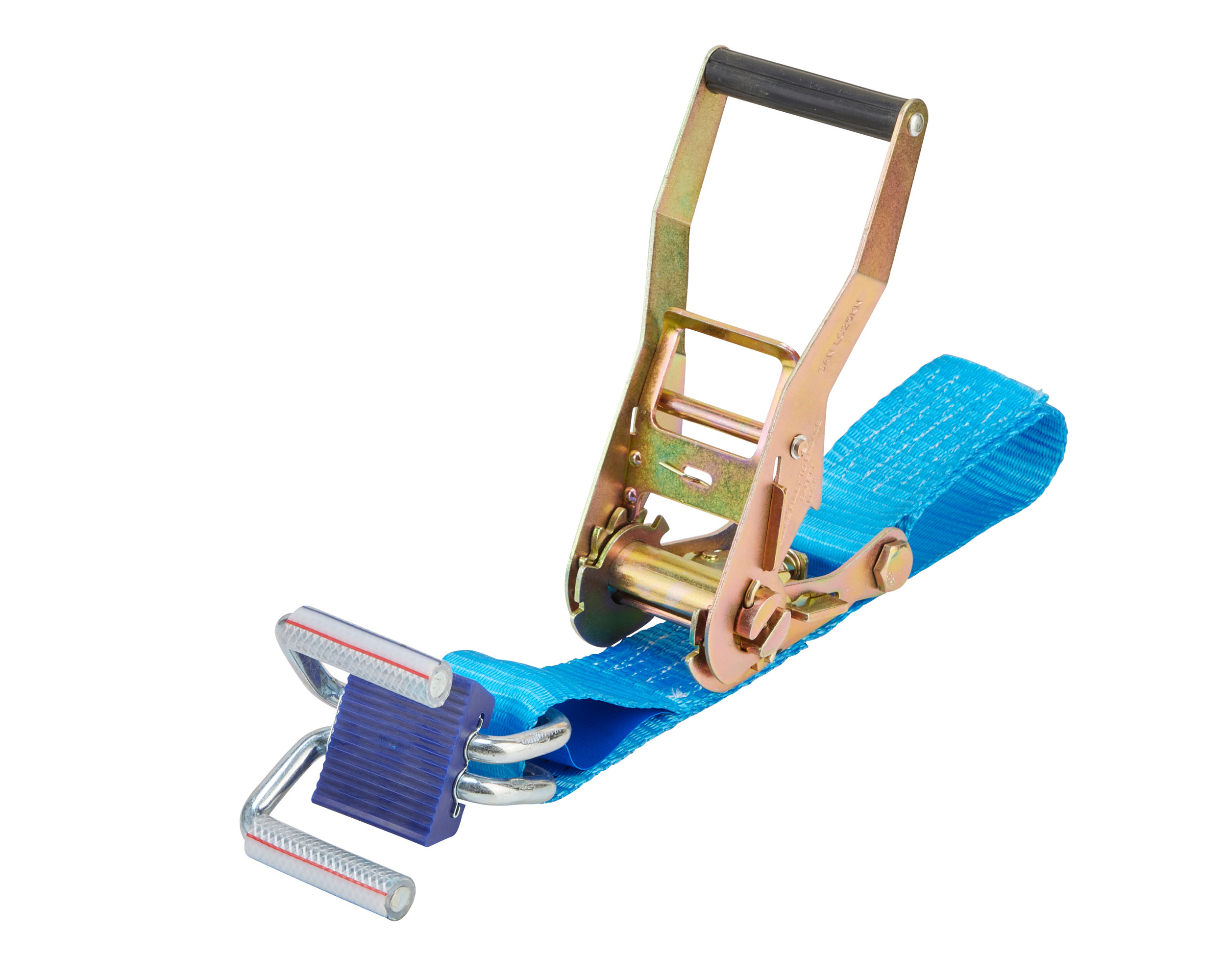26/03/2023

Lashing straps with ratchet and hooks – simple instructions
Load securing plays an important role in the transport industry. Sandax can recommend a wide range of load securing systems for your company.
In this guide, we'll explain in simple terms how to thread , tighten, and loosen a tensioning strap . With this short guide, we'll briefly show you how to use a traditional ratchet strap .
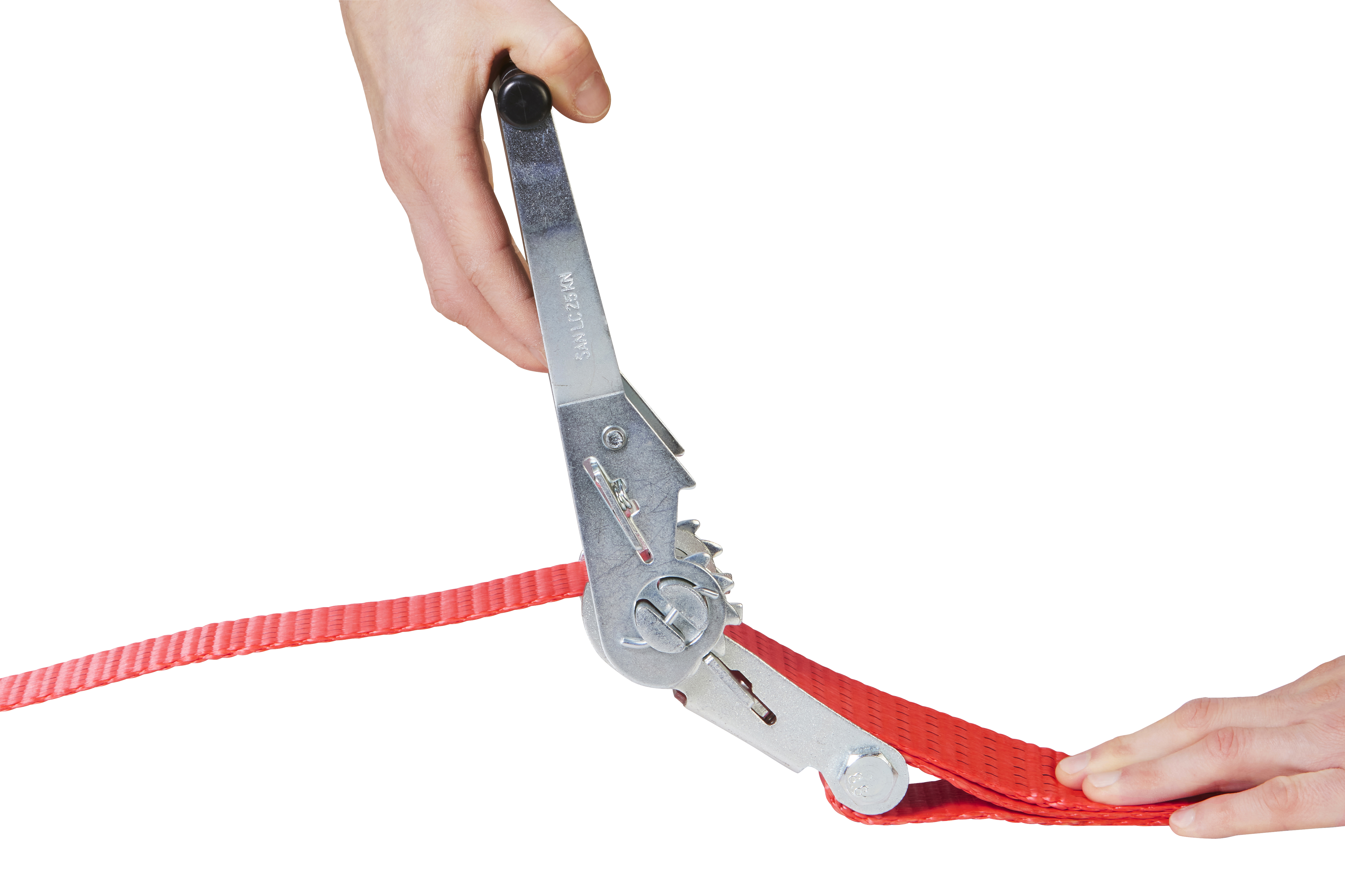
Tension strap instructions Step 1 – Thread the tension strap
Before you can tension tension straps , they first need to be prepared. The length should be adjusted to the item to be secured. First, you need to place the tension strap completely over the load to be secured. Make sure that the actual ratchet can be easily operated on one side of the load. To do this , open the ratchet using the release lock . The release lock is a small lever that can be used to unlock the ratchet. This is located in the middle of the upper, movable part of the ratchet. To do this, you need to pull the release lever upwards so that you can fully open the ratchet. The spiked gears should be facing upwards.
Following our ratchet tensioning strap instructions, the other end of the tensioning strap is now threaded through the lower part of the ratchet . You must therefore thread the tensioning strap correctly . It is important that the threaded strap lies straight and overlaps the length of the ratchet strap attached to the other side.
The remaining strap is pulled through the slot until it is taut and secure. You don't need to worry about the length of the strap when threading the tensioning strap , as you can always retighten it at this point.

Tension belt instructions Step 2 – Secure the load, tighten the tension belt and fasten it
Ratchet and lashing straps are ideal for properly securing loads on a truck or trailer. Ideally, you'll find appropriate attachment points on the loading area, such as safety hooks, through which you can thread the lashing strap. This securing device is also ideal for securing a motorcycle on a trailer (see also lashing straps for motorcycles ). You can position the lashing strap flexibly . The ends can be easily hooked onto the loading area or secured in the grooves of the vehicle wall.
Now you need to tighten and secure the tensioning strap . To do this, move the ratchet until it feels tight. Move the ratchet up and down to ensure the strap is pulled through and tightened along its entire length . Once the tensioning strap feels tight, you don't need to use the ratchet any further. However, check for any slack in the strap.
It's important not to overtighten the lashing strap. Applying too much pressure could damage the load and/or the ratchet strap. According to our lashing strap instructions, you should check whether there's a finger's width of play between the load and the lashing strap. If there isn't, the strap is too tight and you need to loosen it. Then slightly tighten the lashing strap and check again.
Finally, you need to securely close the ratchet. Therefore, fold the ratchet lever back into the closed position . It should audibly click into place. If you don't hear a click, you need to pull on the tensioning strap and buckle again. This will ensure that the strap is securely fastened. If the tensioning strap still comes loose, the lashing strap or ratchet may be defective.
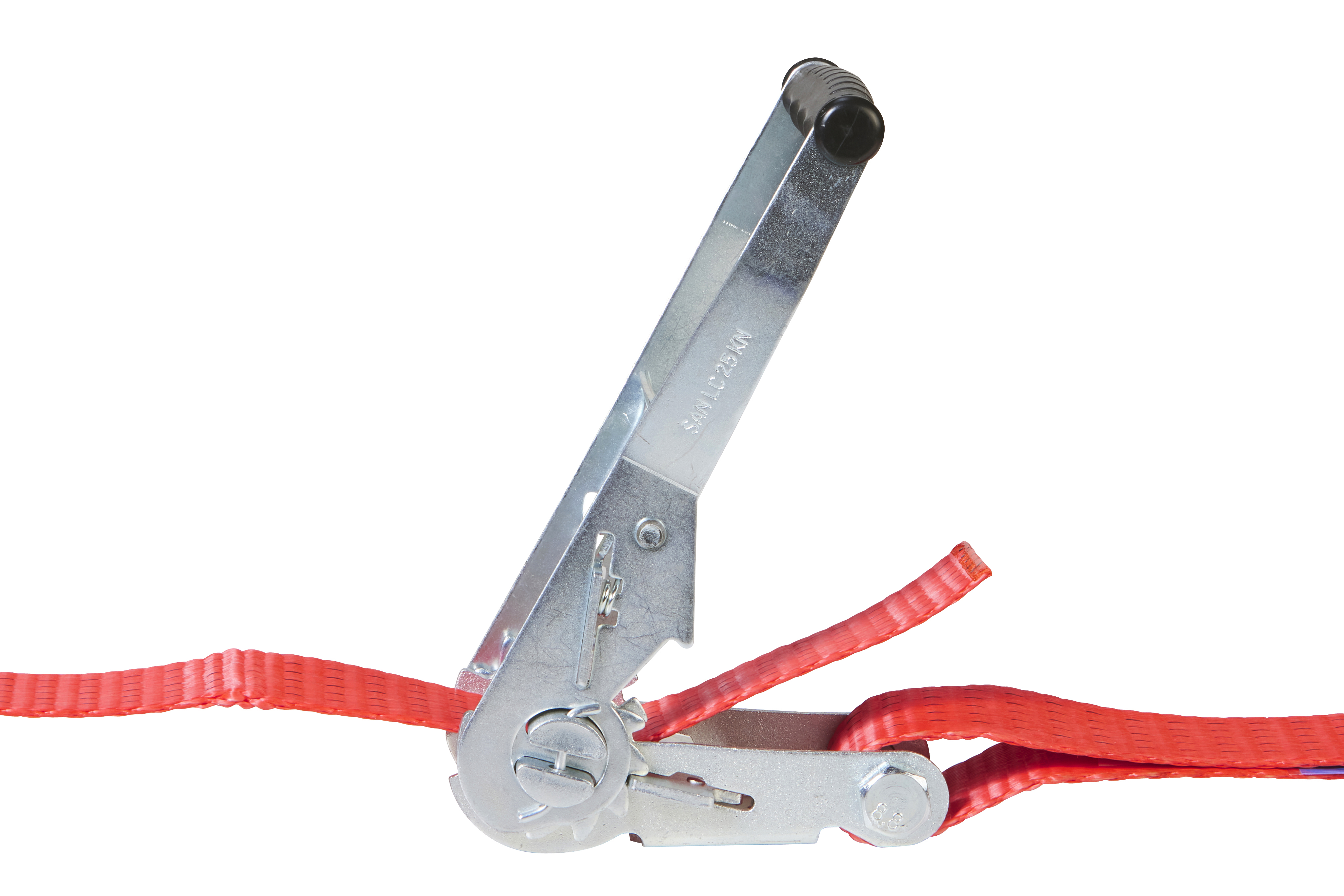
Tension belt instructions Step 3 – Loosen / open tension belt
After transport, you need to release or open the ratchet strap. To do this, pull the release tab and hold it. This deactivates the ratchet function, releasing the lock. Make sure the release tab is easy to grasp and is located on top of the ratchet—for easy release of the strap.
You can now open the ratchet lever and release and pull out the tensioning strap . Fold the ratchet completely open. It should now lie flat. Pull the unattached strap out from the side. The lashing strap will be released from the ratchet , and you can pull it out completely.
Now you can start unloading.

Tension belt instructions Step 4 – Prepare the tension belt for the next use
In our ratchet lashing strap instructions, we'd like to point out that the lashing strap should be stored safely for the next use. To do this, first open the release tab and hold it firmly so that you can close the ratchet . To do this, pull the release tab with your fingers while closing the ratchet. This holds the ratchet in the locked position.
We hope our " Ratchet Lashing Strap Instructions " will help you better understand how to use a tensioning strap. You can find the appropriate ratchet straps here at Sandax at attractive prices. In addition to the standard 5-ton straps, we also carry tensioning straps with long lever ratchets and automatic straps .
Tension belt instructions PDF for free download
Would you like to have the most important steps for using tension straps at your fingertips at all times ? Our practical tension strap instructions as a PDF contain all the important information and helpful tips in a compact format. Simply download the lashing strap instructions as a free PDF and save them directly to your smartphone or print the file . This way, you'll always have the right application at hand – whether on the go or right in the warehouse.
Conclusion on the tensioning strap instructions: Threading, tightening & loosening the tensioning strap
In this blog post, we explained how to thread, tighten, and release the ratchet strap . It's very important to use ratchet straps correctly to ensure reliable load securing . If you're unsure which lashing straps are best suited for your application , please feel free to contact us . We'll be happy to advise you free of charge on which straps to use!
FAQ – Ratchet strap: Instructions, application & tips
How does a ratchet strap work?
A ratchet tensioning strap is used to securely secure loads. The strap is tensioned using a ratchet, ensuring the load remains firmly secured. The ratchet allows the strap to be pulled very tightly with little effort and released again when needed.
How do you thread a tensioning strap correctly?
To properly thread a tensioning strap, fully open the ratchet using the release lock. Feed the loose end of the strap through the ratchet slot from below, ensuring the strap is straight and without twisting. Pull the strap through until it is taut against the load.
How do you tighten a tensioning strap?
After threading the tensioning strap, tighten it by moving the ratchet lever up and down several times. This wraps the strap around the spindle and pulls the load tight. Make sure the strap is neither too tight nor too loose.
How do you loosen a ratchet strap?
To release the tensioning strap, pull the ratchet's release tab and hold it firmly. Fold the ratchet fully open (180°) so that it lies flat. The strap can now be easily pulled out of the slot, and the strap is released.
How do you open a tension strap?
You open a tensioning strap by fully opening the ratchet and pulling the release tab. The strap can then be pulled out of the ratchet. Make sure the ratchet remains in the open position until the strap is completely removed.
What to do if the ratchet cannot be loosened?
If the ratchet won't release, check that the release tab is fully pulled. Sometimes it helps to open the ratchet further or gently pull on the strap to release the tension. For straps that are stuck, a gentle tug can help.
Is there a tension strap manual as a PDF?
Yes, you'll find a PDF of tensioning strap instructions with all the important steps for threading, tensioning, and loosening straps right in this blog post. You can download it for free and use it on the go.
What does a tension strap instruction look like step by step?
- Thread the tensioning strap : Guide the strap through the ratchet and align the strap straight.
- Tighten the tensioning strap : Operate the ratchet several times until the load is secure.
- Release the tensioning strap : pull the release tab, open the ratchet completely, pull out the strap.
- Storing the tensioning strap : Check the strap and ratchet after use and store them properly.
How do you use a ratchet lashing strap correctly?
A ratchet lashing strap is used as follows: Thread the strap, tighten it, lock the ratchet, and release it after transport. Its application is identical to that of a conventional ratchet strap and ensures secure load securing.
What is particularly important when tightening and loosening the tensioning strap?
Do not twist or damage the belt.
Do not tighten too much to avoid damage to the material.
When loosening, always release the tension completely before removing the belt.
(Last update of this article: July 5, 2025)








